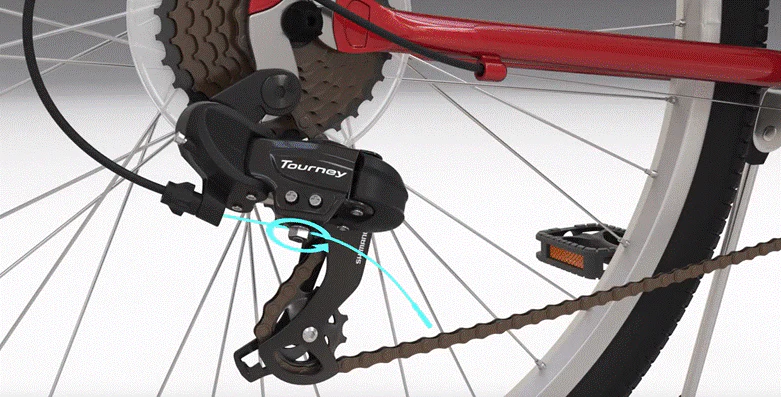Mountain biking is an exhilarating sport that puts a lot of wear and tear on your bike. One of the most crucial components that needs regular attention is the chain. A worn-out chain can lead to poor shifting, skipping, and even a complete break, leaving you stranded on the trail. This comprehensive guide will walk you through changing your mountain bike chain, ensuring you get back to enjoying the trails without any hiccups.
Understanding When It’s Time for a Change
Before diving into the replacement process, it’s important to understand when your chain needs to be replaced. A worn chain can have several negative effects on your ride:
- Poor Shifting: The chain may skip or jump gears, making finding the right gear for the terrain difficult.
- Increased Wear on Other Components: A worn chain can accelerate wear on your cassette and chainrings, leading to costly repairs.
- Chain Breakage: In extreme cases, a worn chain can break, leaving you stranded on the trail.
To check if your chain needs to be replaced, you can use a chain wear tool. These inexpensive tools measure the elongation of the chain and give you a clear indication of its wear. A general rule of thumb is to replace your chain every 2,000-3,000 miles, or more frequently if you ride in harsh conditions.
Tools and Materials
Before you begin, gather the necessary tools and materials:
- Chain Tool: This is essential for removing and installing the chain.
- New Chain: Make sure the new chain is compatible with your bike’s drivetrain (number of speeds).
- Degreaser: For cleaning the drivetrain.
- Lubricant: To keep the new chain running smoothly.
- Rags or Paper Towels: For cleaning up.
- Gloves: Optional, to keep your hands clean.
Step-by-Step Guide
Now that you have everything you need, let’s get started:
1. Remove the Old Chain
- Shift into the smallest cog on the rear cassette and the smallest chainring on the front. This will give you slack in the chain, making it easier to remove.
- Use the chain tool to push out a pin on the old chain. Be careful not to push the pin out; you’ll need it to connect the new chain.
- Remove the old chain from the drivetrain.
2. Clean the Drivetrain
- Apply degreaser to the cassette, chainrings, and derailleur pulleys.
- Use a brush or rag to scrub away any grime and buildup.
- Wipe off the degreaser with a clean rag or paper towel.
More bike hacks:
Pro Tips for Mountain Bike Chain Guide Installation
Bike Chain Lock, Heavy Duty Anti-Theft Bicycle Chain Lock
Bike Chain Slipping When Pedaling Hard – How To Fix – Easy Solution
3. Size the New Chain
- Drape the new chain over the largest cog on the rear cassette and the largest chainring on the front.
- Pull the chain taut, bypassing the rear derailleur.
- The new chain should overlap the old chain by two links. If it’s too long, use the chain tool to remove extra links.
4. Install the New Chain
- Thread the new chain through the rear derailleur and onto the cassette.
- Thread the chain through the front derailleur and onto the chainrings.
- Bring the two ends of the chain together.
- Use the chain tool to insert the pin back into the chain, connecting the two ends.
- Make sure the chain is properly seated on all the cogs and chainrings.
5. Check the Chain Tension
- Shift through all the gears to make sure the chain is running smoothly.
- If the chain is too loose, it may derail. If it’s too tight, it will put strain on the drivetrain.
- Adjust the rear derailleur if necessary to achieve proper chain tension.
6. Lubricate the Chain
- Apply lubricant to each roller on the chain.
- Wipe off any excess lubricant with a clean rag.
Additional Tips
- Replace your cassette and chainrings when they show signs of wear. This will help prolong the life of your new chain.
- Clean and lubricate your chain regularly. This will help prevent premature wear and keep your drivetrain running smoothly.
- If you’re not comfortable changing your chain yourself, take your bike to a qualified mechanic.
Conclusion
Changing your mountain bike chain is a relatively simple task that can save you money and keep your bike running smoothly. By following this guide and performing regular maintenance, you can ensure that your bike is always ready for your next adventure. Remember, a well-maintained bike is a happy bike!
Remember:
- Safety first: Always wear gloves and eye protection when working on your bike.
- Use the right tools: Invest in a good quality chain tool and other necessary tools.
- Don’t be afraid to ask for help: If you’re unsure about any step of the process, consult a qualified mechanic.
Happy Trails!
By following this guide, you’ll be able to change your mountain bike chain with confidence and get back to enjoying the trails in no time. Remember, regular maintenance is key to keeping your bike in top shape and ensuring a safe and enjoyable ride. So, grab your tools, get your hands dirty, and keep your mountain bike running like new!

Taylor is an outdoors & sports equipment specialist, sports author, bike traveler, bicycling and skating expert, and smoke-free ride activist. He is also a regular reviewer of outdoor sports gadgets and accessories. About safety gear and biking facts he analyzes and gives his feedback to outdoorxsports. Writes and tests to help him, you, and us.

